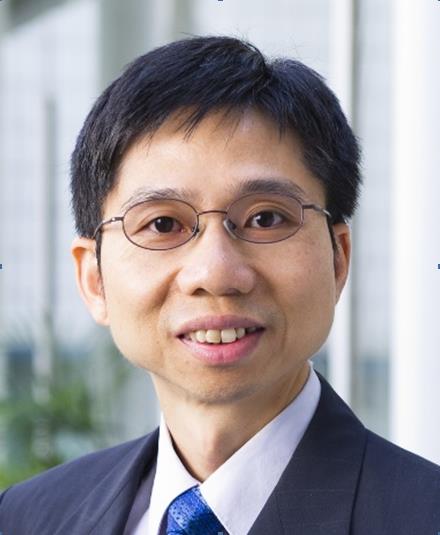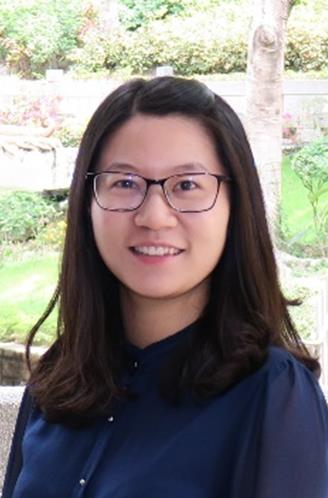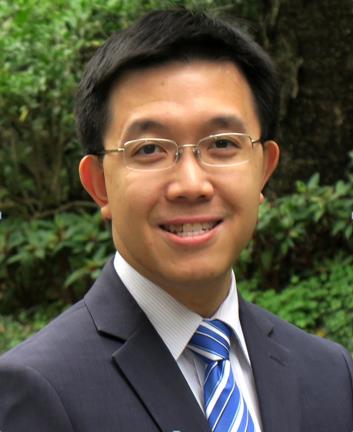演讲题目(一):3D Glass Antennas
演讲者: Kwok Wa (Ben) Leung,City University of Hong Kong
演讲题目(二):Employing Discretization in Metasurface Design
演讲者: Alex M. H. WONG,City University of Hong Kong
演讲题目(三):Machine Learning Based Automatic Medical Image Analysis
演讲者:Dr. Yixuan YUAN,City University of Hong Kong
时 间: 2019年11月12日(周二)下午 15:30始
地 点: 南京市江宁开发区,秣周东路9号,无线谷 A3楼4层3412会议室
主办单位: 毫米波国家重点实验室
IEEE AP-MTT-EMC Joint Nanjing Chapter
江苏省电子学会天线与微波专委会
3D Glass Antennas

Abstract
For a long time, transparent antennas have been of planar (2D) structures that are based on the theory of patch antenna. Very recently, 3D transparent antennas have also been developed. The principle of 3D transparent antenna is based on the theory of dielectric resonator antenna (DRA); the resonance is caused by the whole 3D structure rather than a confined cavity as found in the patch-antenna case. The basic characteristics of glass DRA will be elucidated through the design of a hemispherical glass DRA. This glass DRA has been used as a focusing lens for a solar-cell panel, and the results of both the antenna and solar-cell panel parts will be shown.
Today, many modern buildings have antennas installed for indoor wireless communications. By using transparent DRAs as covers of the light sources, the antenna and lighting systems can be combined into one. Their installations can be done in one go, reducing the overall installation work and cost of the two systems. Also, since the light-cover DRA simply appears as part of the lighting system, it is an excellent camouflage antenna. Different light-cover DRAs will be given in this talk.
3D transparent antennas can also be designed as aesthetic glass wares or artworks. This idea is especially useful when camouflage antennas are needed due to psychological reasons. The results of the aesthetic glass antennas will be presented. Finally, glass antennas for other applications will be discussed in this talk.
Bio
Kwok Wa (Ben) Leung was born in Hong Kong. He received the B.Sc. degree in electronics and the Ph.D. degree in electronics engineering from the Chinese University of Hong Kong, Hong Kong, in 1990 and 1993, respectively. In 1994, he joined the Department of Electronic Engineering, City University of Hong Kong (CityU) and is currently a Chair Professor and the Associate Head. From January to June, 2006, he was a Visiting Professor at the Department of Electrical Engineering, The Pennsylvania State University, State College, PA, USA. His research interests include antenna designs and EM theory. Prof. Leung received the International Union of Radio Science (USRI) Young Scientists Awards in Japan and Russia, in 1993 and 1995, respectively. He received the CityU Research Excellence Award 2013 and Departmental Outstanding Teacher Awards in 2005, 2010, and 2011. He also received the prestigious First Class Award (Natural Science) in the 2016 Higher Education Outstanding Scientific Research Output Awards (Science and Technology) of the Ministry of Education, China. His students received the 2015 iWEM Student Best Paper Award, 2015 IEEE AP-S Eugene F. Knott Memorial Pre-Doctoral Research Award, and 2014 IEEE MTT-S Undergraduate/Pre-graduate Scholarship. He was Chair of the IEEE AP/MTT Hong Kong Joint Chapter for 2006 and 2007. He was the Technical Program Chair, 2008 Asia-Pacific Microwave Conference, Hong Kong, and the Technical Program Co-Chair, 2006 IEEE TENCON, Hong Kong. He was a Guest Editor of IET Microwaves, Antennas and Propagation. He served as Associate Editor for the IEEE Antennas and Wireless Propagation Letters. He was also an Associate Editor for the IEEE Transactions on Antennas and Propagation and received Transactions Commendation Certificates twice in 2009 and 2010 for his exceptional performance. He was the Editor-in-Chief of the Transactions from 2013 to 2016, being the first Chinese and also the first appointed from Asia since the journal was founded in 1952. He was a Distinguished Lecturer of the IEEE Antennas and Propagation Society and is currently a member of the AP-S Distinguished Lecturer Program Committee. He is a Fellow of IEEE.
Machine Learning Based Automatic Medical Image Analysis

Abstract:
Medical image analysis is going through great changes with tremendous new opportunities showing up. The rise of machine learning, the rise of big data analytics and the rise of cloud computing, have brought wonderful opportunities to invent a new generation of medical image analysis. This talk will share my experience in developing state-of-the-art methods to help physicians to analyze the huge growing medical data and make the right and early decision.
Topics of this talk will include fully-automated abnormality classification and recognition for Endoscopy images. Validation results will be presented to demonstrate the effectiveness of our methods to deal with medical problems.
Biography:
Dr. Yixuan YUAN is an Assistant Professor in the Department of Electrical Engineering, City University of Hong Kong (CityU) since April 2018. She received her BEng. degree in Information Countermeasure from Northwestern Polytechnical University, Xi'an, China, in 2010, and the Ph.D. degree from the Department of Electronic Engineering at the Chinese University of Hong Kong, in 2016, supported by the Hong Kong PhD Fellowship Scheme. During 2010-2012, she conducted research on the brain imaging area in the lab of pattern recognition and intelligent system in Northwestern Polytechnical University. She was a postdoctoral fellow in the Department of Radiation Oncology, Stanford Cancer Center, at Stanford University during 2017-2018. Her research focuses on developing machine learning methods for medical image diagnosis. She has received a number of research awards, including 2017 Young Scientist Award from Hong Kong Institute of Science; School of Medicine Dean's Postdoctoral Fellowship of Stanford University; Student Research Award from the Medical and Healthcare Device Industries Association in Hong Kong; Global Scholarship Programme for Research Excellence Award from CUHK; Overseas Research Attachment Programme Award from CUHK; Toshio Fukuda Best Paper award in Mechatronics from IEEE International Conference on Mechatronics and Automation.

Assistant Professor
Member of the State Key Laboratory of Terahertz and Millimeter Waves
Department of Electrical Engineering, City University of Hong Kong
Talk Title: Employing Discretization in Metasurface Design
The metasurface has emerged as a highly desirable tool for manipulating electromagnetic waves, with wide ranging applications in imaging and communication. Most metasurfaces are designed with a continuously varying impedance and/or susceptibility profile. These continuous surface parameters are then approximated by discrete metasurface elements. Fine discretization — using about 10 – 12 elements per wavelength — is often practiced to avoid discretization effects. In this talk, I shall provide some motivations for coarse-discretization –– using as few as two elements per period. I will present my groups’ past and recent works on passive and active discretized Huygens’ metasurfaces, which will showcase both obvious and somewhat surprising benefits to using as few metasurface elements as possible. Beyond reporting our recent progress, I shall also highlight promising application directions for the discretized Huygens’ metasurface.
Biography
Alex M. H. Wong obtained his doctoral degree (Ph.D. 2014) in Electrical and Computer Engineering at the University of Toronto, Canada, and has joined the City University of Hong Kong’s Electronic Department since January 2018. Alex’s current research lies broadly in the areas of metasurfaces, applied electromagnetics and imaging. He has advanced multiple projects on superoscillation-based imaging, “smart train” radar, and next-generation optical, infrared and RF metasurfaces. Alex received several accolades which include an IEEE RWP King (best transaction paper) Award, the URSI Young Scientist Award, the Raj Mittra Grant, and doctoral research awards from the IEEE’s AP and MTT societies. He is a Senior Member of the IEEE (AP and MTT and Photonics Societies).

